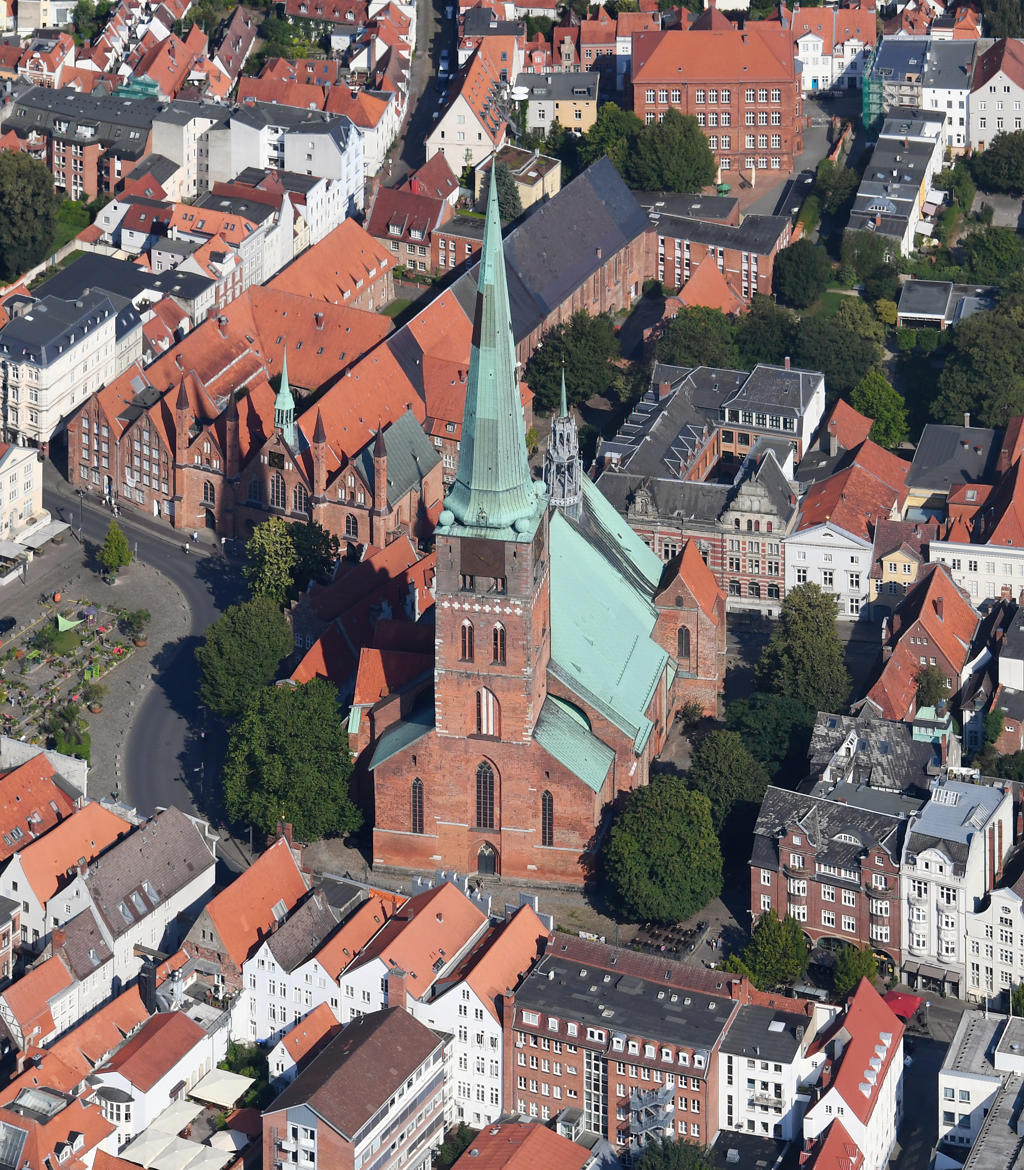About St.-Jakobi-Kirche
The soaring spire of St. Jakobi Church pierces the Lübeck skyline, its red brick façade glowing warmly in the sunlight. Built in the Gothic style, the church’s intricate details include pointed arches, ribbed vaults, and towering windows filled with colorful stained glass. The twin towers, slightly asymmetrical, add a unique charm to the structure, while the surrounding cobblestone streets echo centuries of history.
Dating back to the 14th century, St. Jakobi Church was constructed to serve Lübeck’s seafarers and merchants. Its dedication to Saint James, the patron saint of pilgrims, reflects the city’s role as a hub for travelers and trade during the Hanseatic League’s dominance. The church has witnessed Lübeck’s transformation from a medieval powerhouse to a modern city, standing as a testament to its enduring faith and resilience.
Marks of Time
The interior of St. Jakobi reveals layers of history. The wooden pews, worn smooth by centuries of worshippers, contrast with the ornate gilded altars that shimmer in the dim light. The church’s organ, one of the oldest in Lübeck, fills the space with hauntingly beautiful melodies during services and concerts. The walls bear memorial plaques and inscriptions, honoring sailors lost at sea and Lübeck’s maritime heritage.
Plan your perfect trip to Lübeck with Travo! Download now and start exploring.
Stories in Stone
Above the altar, the stained glass windows depict biblical scenes in vivid colors, their artistry telling stories of faith and redemption. The ship models hanging from the ceiling symbolize the church’s connection to Lübeck’s seafaring community. Each model represents a prayer for safe voyages and a tribute to those who braved the seas. The church’s bell tower houses bells that have rung out over Lübeck for centuries, marking moments of joy and sorrow.
Living Faith
St. Jakobi remains an active place of worship, hosting regular services and community events. Pilgrims on the Camino de Santiago often stop here, drawn by its dedication to Saint James. The church also serves as a cultural venue, with its acoustics making it a popular location for classical music performances. Visitors can feel the blend of spiritual devotion and cultural vibrancy that defines this sacred space.
Divine Details
Notice the intricate carvings on the pulpit, depicting scenes from the life of Christ. The craftsmanship reflects the skill and dedication of medieval artisans. The baptismal font, made of bronze, is adorned with delicate engravings that symbolize rebirth and renewal. The church’s chandeliers, crafted in the Baroque style, add a touch of opulence to the otherwise austere Gothic interior.
Timeless Elements
The church’s exterior features gargoyles that serve both decorative and practical purposes, channeling rainwater away from the walls. The main portal, framed by elaborate stonework, invites visitors to step into a world of history and spirituality. The surrounding Jakobikirchhof, with its quiet gardens and historic buildings, offers a peaceful retreat from the bustling city center.
Spiritual Presence
St. Jakobi Church stands as a beacon of faith and history in Lübeck. Its enduring presence reminds visitors of the city’s rich past and its connection to the wider world through trade, pilgrimage, and maritime endeavors. Whether attending a service, admiring the art, or simply soaking in the atmosphere, the church offers a profound sense of continuity and community.

Map loading...
Location
3 Jakobikirchhof, 23552, Lübeck
